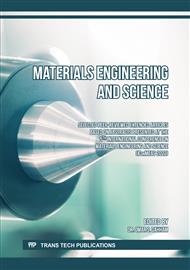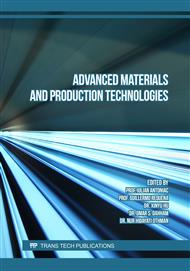p.3
p.15
p.21
p.29
p.39
p.49
p.57
p.67
Effect of Co on Microstructure and Properties of Al-30%Si Alloys
Abstract:
In this paper, the effects of different Co contents on the microstructure and properties of Al-30% Si alloy were studied by means of metallographic microscope, microhardness tester, XRD, conductivity tester and DSC thermal analyzer. The results show that cobalt can effectively improve the microstructure of the alloy, the long needle eutectic silicon becomes short rod, and the coarse irregular block primary silicon particles become smaller. When 0.3% cobalt is added into the alloy, the refining effect of eutectic silicon is the most obvious. When the amount of Co is 0.6%, the refinement effect of primary silicon is the best. The addition of Co can improve the hardness of the alloy. When 0.6 ~ 0.9% cobalt is added, the hardness is the highest. With the increase of Co content, the conductivity and transformation latent heat of the alloy show the same change law. When 0.6% cobalt is added, its value is the maximum. It can be seen that when the Co content is 0.6%, the microstructure and comprehensive properties of the alloy are the best.
Info:
Periodical:
Pages:
15-20
Citation:
Online since:
December 2022
Authors:
Keywords:
Price:
Сopyright:
© 2022 Trans Tech Publications Ltd. All Rights Reserved
Share:
Citation:



